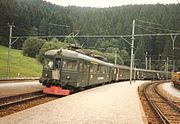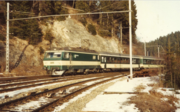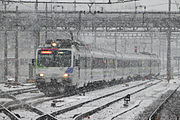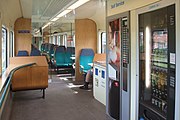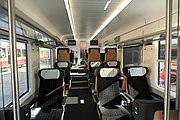Voralpen Express
 | |||||||||||||||||||||||||||||||||||||||||||||||||||||||||||||||||||||||||||||||||||||||||||||||||||||||||||||||||||||||||||||||||||||||||||||||||||||||||||||||||||||||||||||||||||||||||||||||||||||||||||||||||||||||||||||||||||||||||||||||||||||||||||||||||||||||||||||||||||||||||||||||||||||||||||||||||||||||||||||||||||||||||||||||||||||||||||||||||||||||||||||||||||||||||||||||||||||||||||||||||||||||||||||||||||||||||||||||||||||||||||||||||||||||||||||||||||||||||||||||||||||||||||||||||||
| Overview | |||||||||||||||||||||||||||||||||||||||||||||||||||||||||||||||||||||||||||||||||||||||||||||||||||||||||||||||||||||||||||||||||||||||||||||||||||||||||||||||||||||||||||||||||||||||||||||||||||||||||||||||||||||||||||||||||||||||||||||||||||||||||||||||||||||||||||||||||||||||||||||||||||||||||||||||||||||||||||||||||||||||||||||||||||||||||||||||||||||||||||||||||||||||||||||||||||||||||||||||||||||||||||||||||||||||||||||||||||||||||||||||||||||||||||||||||||||||||||||||||||||||||||||||||||
|---|---|---|---|---|---|---|---|---|---|---|---|---|---|---|---|---|---|---|---|---|---|---|---|---|---|---|---|---|---|---|---|---|---|---|---|---|---|---|---|---|---|---|---|---|---|---|---|---|---|---|---|---|---|---|---|---|---|---|---|---|---|---|---|---|---|---|---|---|---|---|---|---|---|---|---|---|---|---|---|---|---|---|---|---|---|---|---|---|---|---|---|---|---|---|---|---|---|---|---|---|---|---|---|---|---|---|---|---|---|---|---|---|---|---|---|---|---|---|---|---|---|---|---|---|---|---|---|---|---|---|---|---|---|---|---|---|---|---|---|---|---|---|---|---|---|---|---|---|---|---|---|---|---|---|---|---|---|---|---|---|---|---|---|---|---|---|---|---|---|---|---|---|---|---|---|---|---|---|---|---|---|---|---|---|---|---|---|---|---|---|---|---|---|---|---|---|---|---|---|---|---|---|---|---|---|---|---|---|---|---|---|---|---|---|---|---|---|---|---|---|---|---|---|---|---|---|---|---|---|---|---|---|---|---|---|---|---|---|---|---|---|---|---|---|---|---|---|---|---|---|---|---|---|---|---|---|---|---|---|---|---|---|---|---|---|---|---|---|---|---|---|---|---|---|---|---|---|---|---|---|---|---|---|---|---|---|---|---|---|---|---|---|---|---|---|---|---|---|---|---|---|---|---|---|---|---|---|---|---|---|---|---|---|---|---|---|---|---|---|---|---|---|---|---|---|---|---|---|---|---|---|---|---|---|---|---|---|---|---|---|---|---|---|---|---|---|---|---|---|---|---|---|---|---|---|---|---|---|---|---|---|---|---|---|---|---|---|---|---|---|---|---|---|---|---|---|---|---|---|---|---|---|---|---|---|---|---|---|---|---|---|---|---|---|---|---|---|---|---|---|---|---|---|---|---|---|---|---|---|---|---|---|---|---|---|---|---|---|---|---|---|---|---|---|---|---|---|---|---|---|---|---|---|---|---|---|---|---|---|---|---|---|---|---|---|---|---|---|---|---|---|---|---|---|---|---|---|---|---|---|---|---|---|---|---|---|---|---|---|---|---|---|---|---|---|---|---|---|---|---|---|---|---|---|---|---|---|---|---|---|---|---|---|---|---|---|---|---|---|
| Service type | InterRegio | ||||||||||||||||||||||||||||||||||||||||||||||||||||||||||||||||||||||||||||||||||||||||||||||||||||||||||||||||||||||||||||||||||||||||||||||||||||||||||||||||||||||||||||||||||||||||||||||||||||||||||||||||||||||||||||||||||||||||||||||||||||||||||||||||||||||||||||||||||||||||||||||||||||||||||||||||||||||||||||||||||||||||||||||||||||||||||||||||||||||||||||||||||||||||||||||||||||||||||||||||||||||||||||||||||||||||||||||||||||||||||||||||||||||||||||||||||||||||||||||||||||||||||||||||||
| First service | 1992 | ||||||||||||||||||||||||||||||||||||||||||||||||||||||||||||||||||||||||||||||||||||||||||||||||||||||||||||||||||||||||||||||||||||||||||||||||||||||||||||||||||||||||||||||||||||||||||||||||||||||||||||||||||||||||||||||||||||||||||||||||||||||||||||||||||||||||||||||||||||||||||||||||||||||||||||||||||||||||||||||||||||||||||||||||||||||||||||||||||||||||||||||||||||||||||||||||||||||||||||||||||||||||||||||||||||||||||||||||||||||||||||||||||||||||||||||||||||||||||||||||||||||||||||||||||
| Current operator(s) | SOB(since December 2013) | ||||||||||||||||||||||||||||||||||||||||||||||||||||||||||||||||||||||||||||||||||||||||||||||||||||||||||||||||||||||||||||||||||||||||||||||||||||||||||||||||||||||||||||||||||||||||||||||||||||||||||||||||||||||||||||||||||||||||||||||||||||||||||||||||||||||||||||||||||||||||||||||||||||||||||||||||||||||||||||||||||||||||||||||||||||||||||||||||||||||||||||||||||||||||||||||||||||||||||||||||||||||||||||||||||||||||||||||||||||||||||||||||||||||||||||||||||||||||||||||||||||||||||||||||||
| Former operator(s) | SBB,SOB(until December 2013) | ||||||||||||||||||||||||||||||||||||||||||||||||||||||||||||||||||||||||||||||||||||||||||||||||||||||||||||||||||||||||||||||||||||||||||||||||||||||||||||||||||||||||||||||||||||||||||||||||||||||||||||||||||||||||||||||||||||||||||||||||||||||||||||||||||||||||||||||||||||||||||||||||||||||||||||||||||||||||||||||||||||||||||||||||||||||||||||||||||||||||||||||||||||||||||||||||||||||||||||||||||||||||||||||||||||||||||||||||||||||||||||||||||||||||||||||||||||||||||||||||||||||||||||||||||
| Route | |||||||||||||||||||||||||||||||||||||||||||||||||||||||||||||||||||||||||||||||||||||||||||||||||||||||||||||||||||||||||||||||||||||||||||||||||||||||||||||||||||||||||||||||||||||||||||||||||||||||||||||||||||||||||||||||||||||||||||||||||||||||||||||||||||||||||||||||||||||||||||||||||||||||||||||||||||||||||||||||||||||||||||||||||||||||||||||||||||||||||||||||||||||||||||||||||||||||||||||||||||||||||||||||||||||||||||||||||||||||||||||||||||||||||||||||||||||||||||||||||||||||||||||||||||
| Termini | St. Gallen,SG Luzern,LU | ||||||||||||||||||||||||||||||||||||||||||||||||||||||||||||||||||||||||||||||||||||||||||||||||||||||||||||||||||||||||||||||||||||||||||||||||||||||||||||||||||||||||||||||||||||||||||||||||||||||||||||||||||||||||||||||||||||||||||||||||||||||||||||||||||||||||||||||||||||||||||||||||||||||||||||||||||||||||||||||||||||||||||||||||||||||||||||||||||||||||||||||||||||||||||||||||||||||||||||||||||||||||||||||||||||||||||||||||||||||||||||||||||||||||||||||||||||||||||||||||||||||||||||||||||
| Stops | 12 (see route map) | ||||||||||||||||||||||||||||||||||||||||||||||||||||||||||||||||||||||||||||||||||||||||||||||||||||||||||||||||||||||||||||||||||||||||||||||||||||||||||||||||||||||||||||||||||||||||||||||||||||||||||||||||||||||||||||||||||||||||||||||||||||||||||||||||||||||||||||||||||||||||||||||||||||||||||||||||||||||||||||||||||||||||||||||||||||||||||||||||||||||||||||||||||||||||||||||||||||||||||||||||||||||||||||||||||||||||||||||||||||||||||||||||||||||||||||||||||||||||||||||||||||||||||||||||||
| Distance travelled | 125 kilometres (78 mi) | ||||||||||||||||||||||||||||||||||||||||||||||||||||||||||||||||||||||||||||||||||||||||||||||||||||||||||||||||||||||||||||||||||||||||||||||||||||||||||||||||||||||||||||||||||||||||||||||||||||||||||||||||||||||||||||||||||||||||||||||||||||||||||||||||||||||||||||||||||||||||||||||||||||||||||||||||||||||||||||||||||||||||||||||||||||||||||||||||||||||||||||||||||||||||||||||||||||||||||||||||||||||||||||||||||||||||||||||||||||||||||||||||||||||||||||||||||||||||||||||||||||||||||||||||||
| Average journey time | 2 hours 16 minutes | ||||||||||||||||||||||||||||||||||||||||||||||||||||||||||||||||||||||||||||||||||||||||||||||||||||||||||||||||||||||||||||||||||||||||||||||||||||||||||||||||||||||||||||||||||||||||||||||||||||||||||||||||||||||||||||||||||||||||||||||||||||||||||||||||||||||||||||||||||||||||||||||||||||||||||||||||||||||||||||||||||||||||||||||||||||||||||||||||||||||||||||||||||||||||||||||||||||||||||||||||||||||||||||||||||||||||||||||||||||||||||||||||||||||||||||||||||||||||||||||||||||||||||||||||||
| Service frequency | every hour | ||||||||||||||||||||||||||||||||||||||||||||||||||||||||||||||||||||||||||||||||||||||||||||||||||||||||||||||||||||||||||||||||||||||||||||||||||||||||||||||||||||||||||||||||||||||||||||||||||||||||||||||||||||||||||||||||||||||||||||||||||||||||||||||||||||||||||||||||||||||||||||||||||||||||||||||||||||||||||||||||||||||||||||||||||||||||||||||||||||||||||||||||||||||||||||||||||||||||||||||||||||||||||||||||||||||||||||||||||||||||||||||||||||||||||||||||||||||||||||||||||||||||||||||||||
| Train number(s) | 2402 - 2442 | ||||||||||||||||||||||||||||||||||||||||||||||||||||||||||||||||||||||||||||||||||||||||||||||||||||||||||||||||||||||||||||||||||||||||||||||||||||||||||||||||||||||||||||||||||||||||||||||||||||||||||||||||||||||||||||||||||||||||||||||||||||||||||||||||||||||||||||||||||||||||||||||||||||||||||||||||||||||||||||||||||||||||||||||||||||||||||||||||||||||||||||||||||||||||||||||||||||||||||||||||||||||||||||||||||||||||||||||||||||||||||||||||||||||||||||||||||||||||||||||||||||||||||||||||||
| On-board services | |||||||||||||||||||||||||||||||||||||||||||||||||||||||||||||||||||||||||||||||||||||||||||||||||||||||||||||||||||||||||||||||||||||||||||||||||||||||||||||||||||||||||||||||||||||||||||||||||||||||||||||||||||||||||||||||||||||||||||||||||||||||||||||||||||||||||||||||||||||||||||||||||||||||||||||||||||||||||||||||||||||||||||||||||||||||||||||||||||||||||||||||||||||||||||||||||||||||||||||||||||||||||||||||||||||||||||||||||||||||||||||||||||||||||||||||||||||||||||||||||||||||||||||||||||
| Class(es) | First and Second Class | ||||||||||||||||||||||||||||||||||||||||||||||||||||||||||||||||||||||||||||||||||||||||||||||||||||||||||||||||||||||||||||||||||||||||||||||||||||||||||||||||||||||||||||||||||||||||||||||||||||||||||||||||||||||||||||||||||||||||||||||||||||||||||||||||||||||||||||||||||||||||||||||||||||||||||||||||||||||||||||||||||||||||||||||||||||||||||||||||||||||||||||||||||||||||||||||||||||||||||||||||||||||||||||||||||||||||||||||||||||||||||||||||||||||||||||||||||||||||||||||||||||||||||||||||||
| Seating arrangements | First Class carriage with panorama view (until 2019). Second class coach seating | ||||||||||||||||||||||||||||||||||||||||||||||||||||||||||||||||||||||||||||||||||||||||||||||||||||||||||||||||||||||||||||||||||||||||||||||||||||||||||||||||||||||||||||||||||||||||||||||||||||||||||||||||||||||||||||||||||||||||||||||||||||||||||||||||||||||||||||||||||||||||||||||||||||||||||||||||||||||||||||||||||||||||||||||||||||||||||||||||||||||||||||||||||||||||||||||||||||||||||||||||||||||||||||||||||||||||||||||||||||||||||||||||||||||||||||||||||||||||||||||||||||||||||||||||||
| Catering facilities | Vending machines | ||||||||||||||||||||||||||||||||||||||||||||||||||||||||||||||||||||||||||||||||||||||||||||||||||||||||||||||||||||||||||||||||||||||||||||||||||||||||||||||||||||||||||||||||||||||||||||||||||||||||||||||||||||||||||||||||||||||||||||||||||||||||||||||||||||||||||||||||||||||||||||||||||||||||||||||||||||||||||||||||||||||||||||||||||||||||||||||||||||||||||||||||||||||||||||||||||||||||||||||||||||||||||||||||||||||||||||||||||||||||||||||||||||||||||||||||||||||||||||||||||||||||||||||||||
| Technical | |||||||||||||||||||||||||||||||||||||||||||||||||||||||||||||||||||||||||||||||||||||||||||||||||||||||||||||||||||||||||||||||||||||||||||||||||||||||||||||||||||||||||||||||||||||||||||||||||||||||||||||||||||||||||||||||||||||||||||||||||||||||||||||||||||||||||||||||||||||||||||||||||||||||||||||||||||||||||||||||||||||||||||||||||||||||||||||||||||||||||||||||||||||||||||||||||||||||||||||||||||||||||||||||||||||||||||||||||||||||||||||||||||||||||||||||||||||||||||||||||||||||||||||||||||
| Rolling stock | see article | ||||||||||||||||||||||||||||||||||||||||||||||||||||||||||||||||||||||||||||||||||||||||||||||||||||||||||||||||||||||||||||||||||||||||||||||||||||||||||||||||||||||||||||||||||||||||||||||||||||||||||||||||||||||||||||||||||||||||||||||||||||||||||||||||||||||||||||||||||||||||||||||||||||||||||||||||||||||||||||||||||||||||||||||||||||||||||||||||||||||||||||||||||||||||||||||||||||||||||||||||||||||||||||||||||||||||||||||||||||||||||||||||||||||||||||||||||||||||||||||||||||||||||||||||||
| Track gauge | 1,435 mm(4 ft8+1⁄2in) | ||||||||||||||||||||||||||||||||||||||||||||||||||||||||||||||||||||||||||||||||||||||||||||||||||||||||||||||||||||||||||||||||||||||||||||||||||||||||||||||||||||||||||||||||||||||||||||||||||||||||||||||||||||||||||||||||||||||||||||||||||||||||||||||||||||||||||||||||||||||||||||||||||||||||||||||||||||||||||||||||||||||||||||||||||||||||||||||||||||||||||||||||||||||||||||||||||||||||||||||||||||||||||||||||||||||||||||||||||||||||||||||||||||||||||||||||||||||||||||||||||||||||||||||||||
| Electrification | 15 kV 16,7 Hz AC Overhead | ||||||||||||||||||||||||||||||||||||||||||||||||||||||||||||||||||||||||||||||||||||||||||||||||||||||||||||||||||||||||||||||||||||||||||||||||||||||||||||||||||||||||||||||||||||||||||||||||||||||||||||||||||||||||||||||||||||||||||||||||||||||||||||||||||||||||||||||||||||||||||||||||||||||||||||||||||||||||||||||||||||||||||||||||||||||||||||||||||||||||||||||||||||||||||||||||||||||||||||||||||||||||||||||||||||||||||||||||||||||||||||||||||||||||||||||||||||||||||||||||||||||||||||||||||
| Timetable number(s) | 600; 670; 870; | ||||||||||||||||||||||||||||||||||||||||||||||||||||||||||||||||||||||||||||||||||||||||||||||||||||||||||||||||||||||||||||||||||||||||||||||||||||||||||||||||||||||||||||||||||||||||||||||||||||||||||||||||||||||||||||||||||||||||||||||||||||||||||||||||||||||||||||||||||||||||||||||||||||||||||||||||||||||||||||||||||||||||||||||||||||||||||||||||||||||||||||||||||||||||||||||||||||||||||||||||||||||||||||||||||||||||||||||||||||||||||||||||||||||||||||||||||||||||||||||||||||||||||||||||||
| |||||||||||||||||||||||||||||||||||||||||||||||||||||||||||||||||||||||||||||||||||||||||||||||||||||||||||||||||||||||||||||||||||||||||||||||||||||||||||||||||||||||||||||||||||||||||||||||||||||||||||||||||||||||||||||||||||||||||||||||||||||||||||||||||||||||||||||||||||||||||||||||||||||||||||||||||||||||||||||||||||||||||||||||||||||||||||||||||||||||||||||||||||||||||||||||||||||||||||||||||||||||||||||||||||||||||||||||||||||||||||||||||||||||||||||||||||||||||||||||||||||||||||||||||||
TheVoralpen-Express(VAE) is anamed trainconnecting small to medium-sized cities and villages inCentralandEasternSwitzerland,carrying this name since 1992. It is operated bySüdostbahn(SOB) and runs every hour as anInterRegio(IR) betweenSt. GallenandLucerne,bypassingZurich.Its name derives from the fact that it traverses thePrealps(German:Voralpen).
History
[edit]The firstthrough trainsbetweenRomanshorn(Lake Constance) andArth-Goldaustarted in 1940 after theelectrificationof the Südostbahn line betweenRapperswiland Arth-Goldau. Romanshorn–Rapperswil had been under wires since 1926/31. The trains,fir greenMUscomposed of CFZe 4/4 and BCFZe 4/4 (both later calledABe 4/4)motor coachesandcoaches,were jointly operated byBodensee–Toggenburg-Bahn(BT),Südostbahn(SOB), and theSwiss Federal Railways(SBB CFF FFS). In 1944, BT addedbuffet carsto thetrainsets.In 1947, some trains continued from Arth-Goldau to Lucerne. In 1960, operation was changed topush-pullconfiguration with very powerful motor coaches (BDe 4/4). The trainsets were at this time painted in green and cream.
1982 brought theclock-face timetablewith a train Romanshorn–Lucerne every two hours, but also the end for buffet cars on this route. In 1991, BT and SOB bought inter-city coaches, model EW IV (Einheitswagen IV,Swiss standard coaches IV), to replace the push-pull sets. The nameVoralpen-Expressappeared for the first time in railway guides in 1992. In 1995, additional, unnamed trains every two hours operated between Romanshorn and Arth-Goldau, again with push-pull sets. After Revvivo coaches had been used for these trains from 1997 on, it was decided to sell the EW IV to Swiss Federal Railways and buy more Revvivos to allow an hourly push-pull trainset between Romanshorn and Lucerne. In 2001, BT and SOB merged into the newSOB,which reduced the number of participating companies to two.VAEran as anInterRegio(IR)express trainuntil 2013.
The concept changed on 15 December 2013. SOB became the sole operator ofVoralpen-Express,and the train service was limited to St. Gallen–Lucerne.VAEbecame a distincttrain category,indicated as such onplatform displays.To cope with the increasing number of passengers, trains at that time generally had seven coaches, which means that twolocomotivesor motor coaches were needed. This is due to the 50‰ (1:20)gradesbetweenPfäffikonand Arth-Goldau. Motive power was at each end, allowing a push-pull service withoutdriving trailers.
-
ABe 4/4 (formerly CFZe 4/4) motor coach with coaches at Biberbrugg station
-
Push-pull set with motor coach in green and cream livery on the Glatttal viaduct (Herisau)
-
SLM Re 456 locomotive of BT (in green and cream livery) with SOB EW IV coaches near Biberbrugg
-
Push-pull set composed of two motor coaches (head and tail) and Revvivo coaches arriving in Rapperswil
-
Vending machines inside of a now out of servicesecond classRevvivo coach
With the timetable change of 15 December 2019, the train category was updated toPanorama Express(PE), but because it caused confusion among passengers it was later changed again toIRVoralpen-Express.[3]The locomotive hauled trains (with white, green and bluelivery) were replaced byRABe 526EMUs. TheEMUsconsist of an eight car RABe 526 100/200 set, typeTraverso,with acopperand red livery (with black window frames and grey doors), running the whole route. This set includes a "bistro" car fitted with vending machines in the second class coach bordering the first class coaches. During peak-hours, the copper-red sets are each combined with a silver-red four car RABe 526 000 set (FLIRT or FLIRT3 model) on the section between Rapperswil and St. Gallen. The two sets arecoupled and uncoupled,respectively, in Rapperswil (portion working). The shorter set operates asS40ofZurich S-Bahnbetween Rapperswil andEinsiedeln.This allows passengers to travel between St. Gallen and Einsiedeln without changing trains.
The same EMUs also operate asTreno GottardobetweenLocarnoandZurich/Baselsince December 2020, and asAare LinthbetweenChurandBernsince December 2021.
-
Since 2019,StadlerFLIRT3trains ( "Traverso" ) operate asInterRegioVoralpen Expressbetween Lucerne and St. Gallen
-
View of thefirst classinterior of Stadler FLIRT3 "Traverso"
-
View of thesecond class(family compartment) interior of Stadler FLIRT3 "Traverso"
-
Stadler FLIRT3 "Traverso" eight car set (left) coupled with a four car set (FLIRT, right) atSchmerikon railway station
-
Stadler FLIRT3 "Traverso" also operates asTreno GottardoandAare Linthnamed trains
Route
[edit]



TheVoralpen-Expressruns along the Alpine foothills, stopping at stations in theCantonsofLucerne,Schwyz,St. Gallen,andAppenzell Ausserrhoden.The track also passes throughSamstagernin theCanton of Zurich,butVAEdoes not stop at that station. In conjunction withtimetable changes,VAEservices were suspended to some stations, including the cessation of services between St. Gallen and Romanshorn in 2013, while a few new stops en route were also added (e.g., Meggen Zentrum). The lowest altitude en route is atSchmerikon(408 metres (1,339 ft)a.s.l.) and the highest atBiberegg(933 metres (3,061 ft) a.s.l.), nearRothenthurm.[4]The route is mostly asingle-track railway,with intermittentdouble-track railwaypresent in sections where trains cross regularly.
From St. Gallen to Lucerne, theVoralpen-Expressuses the following railway lines (or sections thereof):Bodensee–Toggenburg,Uznach–Wattwil,Rapperswil–Ziegelbrücke,Rapperswil–Pfäffikon,Pfäffikon–Arth-Goldau,GotthardandLucerne–Immensee.
Besides creating a tangential link on the southern edge of thegreater Zurich area,VAEis popular for the alpine and prealpine scenery.
Connections and tourism
[edit]Several stations en route ofVoralpen-Expressare important junctions, offering timely connections due to thesynchronized Swiss timetable.The trains are used bycommuters(especially duringrush hour) andtouristsalike. The most important stations with connecting trains/busses, regular boat lines on the lakes, and nearby tourist destinations are:
- Luzern:trains ofLucerne S-Bahn,GoldenPass Line,boat lines of Lake Lucerne(Vierwaldstättersee),Pilatusmountain
- Luzern Verkehrshausstation is situated next to theSwiss Museum of Transport(Verkehrshaus der Schweiz)
- Arth-Goldau:trains through theGotthard Rail Tunnel/Gotthard Base TunneltoTicinoandItaly,trains toZug(Zug Stadtbahn) andZurich HB,cog-wheel traintoRigimountain (Arth–Rigi railway line),Lake Zug boat linesdeparting fromArth,ZoonearGoldau.
- Biberbrugg:trains toEinsiedeln(Einsiedeln Abbey) andWädenswil
- Pfäffikon:trains toSargans(connecting bus service toLiechtenstein) andChur(narrow gaugenetwork ofRhätische Bahnto other destinations in CantonGrisons), lines ofZurich S-BahnandInterRegiosto Zurich HB
- Rapperswil:trains toZurich(Zurich S-Bahn),Lake Zurich boat lines,medievaltown andcastle,Knie's Kinderzoo
- Uznach:trains toZiegelbrücke(Walensee) andSchwanden(Glarus Alps)
- Wattwil:trains and busses to destinations inToggenburgandChurfirsten
- Herisau:trains toAppenzell(Wasserauen/Alpstein) andGossau(narrow gauge network ofAppenzeller Bahnen)
- St. Gallen:trains ofSt. Gallen S-Bahn,InterCity/EuroCitytrains to Zurich HB,Austria,andGermany,St. Gallen AbbeyandAbbey Library(bothUNESCO World Heritage sites)
Civil engineering works and scenery
[edit]On its journey, theVoralpen-Expresspasses over a series ofviaductsand through severaltunnels.The mountainous route also parallels scenic lakes andmoors.Here are some noteworthy examples:
- Lake Lucerne(Vierwaldstättersee), between Lucerne andKüssnacht am Rigi
- Lake Zug(Zugersee), between Küssnacht a. R. andArth-Goldau
- Rothenthurmraised bog(Rothenthurmer Hochmoor) andFinnenloipe Rothenthurm,a 20 kilometres (12 mi) longcross-country skiing trail
- Seedamm,a mostly natural dam (ice agemoraine) between Pfäffikon and Rapperswil separatingLake Zurich(Zürichsee) into anupperand lower lake, andUfenauandLützelauislands
- Ricken Tunnel,a 8.6 kilometres (5.3 mi) long tunnel with 15,75‰ grades (built between 1904 and 1910) that connects theLinthplain withToggenburg
- Wasserfluh Tunnel,a 3.5 kilometres (2.2 mi) long tunnel between the villages ofLichtensteigandBrunnadernwith 10,4‰ grades (built between 1905 and 1910)
- Wissbach Viaduct,a 289.5 metres (950 ft) long and 63 metres (207 ft) highstone arch bridgenearDegersheim
- Glatttal Viaduct,a 296 metres (971 ft) long and up to 34 metres (112 ft) high viaduct nearHerisau railway station
- Sitter Viaduct (SOB),a 365 metres (1,198 ft) long and 99 metres (325 ft) high bridge (the highest railroad bridge in Switzerland) over theSitter rivernear St. Gallen (built between 1908 and 1910)
Travelling with theVoralpen-Expressalso offers scenic views on theAlpsand Prealps. Some notable peaks visible on the way arePilatus,Rigi,Mythen,Speer,Churfirsten,andSäntis.The route also crosses several creeks and rivers, among others theReuss,Biber,Alp,Sihl,Jona,Thur,andSitter.
Former rolling stock
[edit]

Between 2013 and 2019, fourteenlocomotivesandmotor coachesformed seven pairs of motive power for theVoralpen-Express.
| Count | Vehicle | Vehicle numbers | Notes |
|---|---|---|---|
| 4 | Re 446 | 91 85 4 446 015–018 | locomotives worked as pairs (head and tail) during peak-hours |
| 6 | Re 456 | 91 85 4 456 091–096 | locomotives worked as pairs (head and tail) during peak-hours |
| 4 | RBDe 561 | 94 85 7 561 081–084 | NPZ motor coaches worked as pairs (head and tail) during peak-hours |
The Re 446 locomotives were purchaised fromSwiss Federal Railways(Re 4/4IV) in 1994 and 1996. The Re 456 locomotives were acquired byBTand named after towns along the former BT owend route. The different motive power vehicle types could not be combined. If less than five pairs were available,SOBleased aRe 420(Re 4/4II) from Swiss Federal Railways (in February 2014 it wasRe 421393), which could be used together with a Re 446.
Thirty-oneair-conditionedRevvivo coaches, 1997/99 rebuilts from EW I coaches (Einheitswagen I,Swiss standard coaches I), were the backbone of theVAEcoaching stock. Ten NPZ vehicles (1991/95) were later added to the stock to allow for enough capacity. Four older coaches were kept as a reserve, but the Revvivo prototype of 1995 (BR 748) had been withdrawn. The sets included first class coaches (A), bistro coaches with vending machines (BR), second class coaches (B), and part first part second classcontrol trailers(ABt).
| Count | Coach | Coach numbers | Notes |
|---|---|---|---|
| 8 | Revvivo-A | 50 85 18-35 711–718 | |
| 1 | Bodan | 50 85 17-35 719 | ExSBBB 6000/BT B 350, rebuilt in 1991; reserve |
| 16 | Revvivo-B | 50 85 20-35 721–736 | Numbers 735–736 withSchlierenbogies |
| 7 | Revvivo-BR | 50 85 20-35 741–747 | Numbers 741–744 were ex BT AB 251–254; 1 coach was kept as reserve |
| 6 | NPZ-B | 50 85 29-35 781–786 | Built in 1991; operated as pairs |
| 4 | NPZ-ABt | 50 85 80-35 181–184 | Built in 1995; control trailers used as intermediate trailers |
| 3 | B EW I | 50 85 20-35 753–754, 767 | Ex BT (1967–68); number 767 was kept as reserve |
Fivetrainsetswere needed for the daily operation, and a sixth set was available in Herisau as a reserve. It allowed to exchange the sets in order to clean and maintain them. The six sets were either formed from two locomotives with seven coaches:
- Re–ABt–B–B–BR–A–B–B–Re (4 sets)
or with two motor coaches and six coaches:
- RBDe–A–B–B–BR–A–B–RBDe (2 sets)
The seventh pair of locomotives was kept as an additional reserve. Thus, if one motor coach RBDe needed maintenance, an additional set with locomotives could have been formed.
While the coaches and motor coaches had the typical white, green and blueliveryand sported the formerVoralpen-Expresslogo, the locomotives were frequently used as mobileadvertising hoardingsor showed the SOB livery.
The Revvivo coaches were in use forVAEuntil December 2019. They were afterwards sold toLe Train des Mouttes(aheritage railway) inFranceandMÁVRail Tours inHungary.[5][6]The Re 446 locomotives were purchaised byEisenbahndienstleister GmbH(EDG),[7]while the Re 456 locomotives were sold toSihltal Zürich Uetliberg Bahn(SZU),Verein Depot Schienenfahrzeuge Koblenz(DSF), andBRM Investment.[8]
References
[edit]- ^Eisenbahnatlas Schweiz.Cologne: Schweers + Wall. 2012. pp. 13–15, 24–25.ISBN978-3-89494-130-7.
- ^"Zürcher S-Bahn/S-Bahn St.Gallen/S-Bahn Bodensee"(PDF)(in German).Swiss Federal Railways.12 December 2021.Retrieved24 December2021.
- ^Info24:https:// info24news.net/voralpenexpress(in German)
- ^"Topographische Informationen − Voralpen-Express − SOB".
- ^SOBdirekt:https://direkt.sob.ch/news-detail/wo-sind-sie-geblieben(in German)
- ^SOBdirekt:https://direkt.sob.ch/themen/bahnwissen/die-wohl-wichtigsten-fahrten-der-revvivo-wagen(in German)
- ^Bahnonline.ch:https:// bahnonline.ch/3555/sob-verkaufte-ihre-4-lokomotiven-der-serie-re-446-an-die-edg/(in German)
- ^Bahnonline.ch:https:// bahnonline.ch/6600/sob-verkauft-je-zwei-re-456-an-szu-und-dsf/(in German)
External links
[edit]![]() Media related toVoralpen-Expressat Wikimedia Commons
Media related toVoralpen-Expressat Wikimedia Commons

